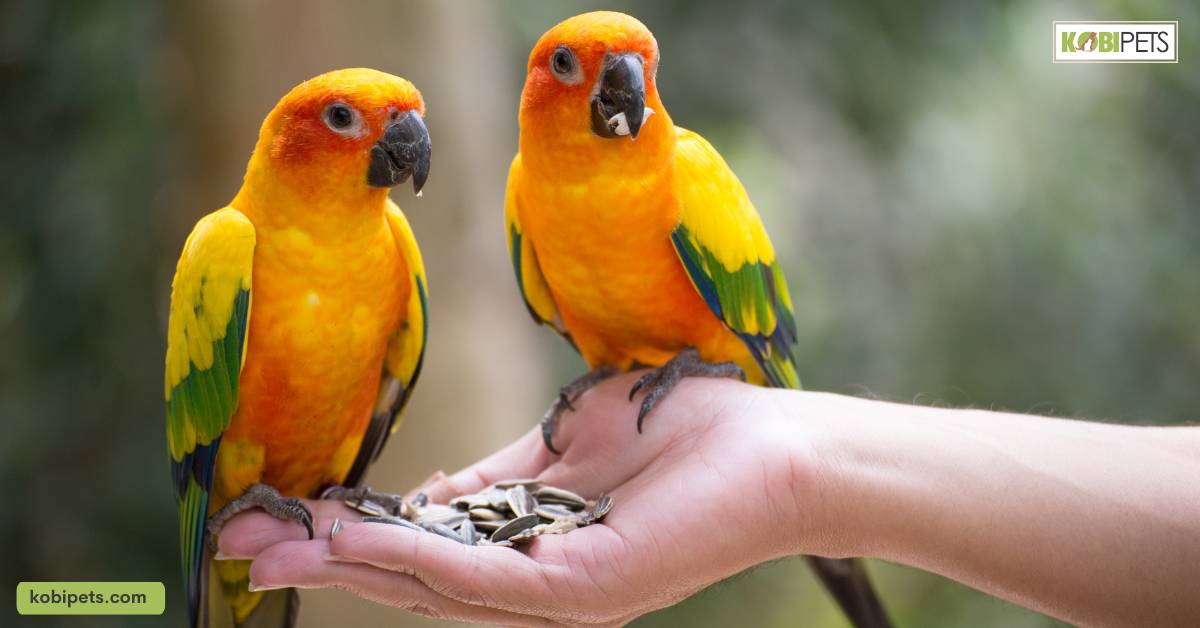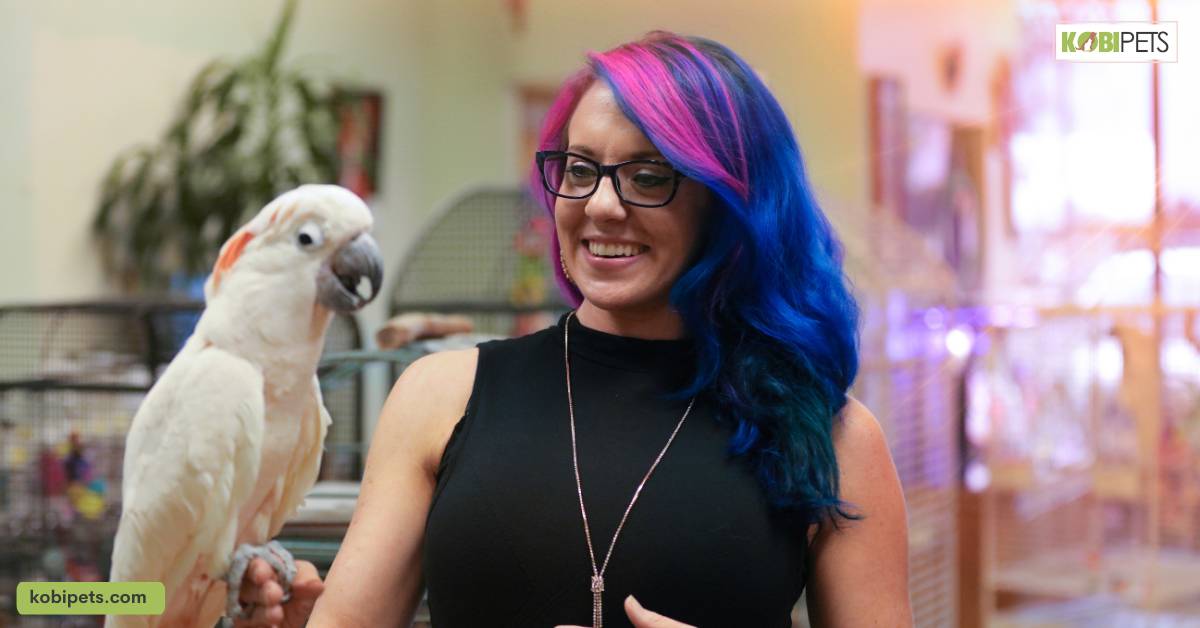Birds are fascinating creatures that have captured the attention of humans for centuries. One of the most rewarding experiences of owning a bird is teaching them to talk. While some birds are more adept at talking than others, with the right techniques and patience, any bird can learn to mimic human speech.
Training your bird to talk requires patience, persistence, and understanding of their behavior. Create a positive environment, teach your bird to mimic sounds, and use repetition and reinforcement techniques. With time, effort, and the right techniques, you can teach your bird to communicate with you in a whole new way.
Choosing the Right Bird Species for Talking
Birds can be a great addition to any household. They are beautiful, intelligent, and can make great companions. Some bird species are known for their ability to talk, which can be a fun and entertaining experience for bird enthusiasts.
Here are some tips to help you make the right choice:
1. Consider the Breed
Not all birds are equally capable of talking. Different breeds of birds have varying degrees of vocal abilities. For instance, parrots are generally considered the best talkers among birds. They are able to mimic human speech and can develop a large vocabulary with proper training.
Other breeds of birds, such as canaries and finches, are not known for their talking abilities.
2. Look at the Age
The age of the bird can also affect its ability to talk. Young birds that are still in the learning phase are more likely to develop good talking skills. As they grow older and become more set in their ways, it may be more difficult for them to develop new vocalizations.
3. Consider the Gender
In some bird species, the ability to talk is more prevalent among males than females. For example, male budgies tend to be more talkative than their female counterparts. However, this is not always the case, so it is important to do your research on the specific breed you are interested in.
4. Do Your Research
Before choosing a bird species for their talking abilities, it is important to do your research. Talk to other bird owners and breeders to get a better idea of which breeds are known for their talking skills. You can also read books and articles on the subject to gain a better understanding of the different breeds and their abilities.
Creating a Positive Environment
Creating a positive environment for your bird is essential to encourage talking. Make sure that their cage is kept in a quiet area and give them plenty of space to move around. Give the bird a variety of toys and activities to keep them entertained.
Socializing with them regularly will help build trust and encourage communication. Speak calmly and use positive reinforcement when they make vocalizations. Finally, the bird should be fed a healthy and balanced diet to keep them healthy and happy.
Making sure that your bird is comfortable in their surroundings is key to encouraging talking. Provide adequate space in their cage, as well as plenty of toys and activities. Give them a variety of treats to encourage positive behavior. Speak to the bird in a calm manner, using positive reinforcement when they mimic words or phrases.
Teaching Your Bird to Mimic Sounds and Words
Teaching your bird to mimic sounds and words can be a fun and rewarding experience. With some patience and persistence, you can train your bird to entertain you and your guests with their vocal abilities.
Here are a few tips and tricks to help you teach your bird to mimic sounds and words:
| Steps to Teach Your Bird | Examples of Sounds and Words |
|---|---|
| Start with simple sounds. Begin by teaching your bird simple sounds, such as whistles or beeps, before moving on to more complex phrases or words. | Whistling, Beeping, Clicking, Singing a tune |
| Repeat the sound or word consistently. Consistency is key when it comes to training your bird. Make sure to repeat the sound or word multiple times so that your bird can hear it clearly and learn to associate it with a specific action or object. | Hello, Goodbye, Pretty bird, How are you? |
| Reward your bird with treats. Positive reinforcement is an important part of the training process. Reward your bird with a treat every time they successfully mimic a sound or word. | Sunflower Seeds, Millet, Fruit, Nutriberry Treats |
| Practice patience. Teaching your bird to mimic sounds and words takes time and patience. | I love you, Come here, Peekaboo, Give me a kiss |
Repetition and Reinforcement Techniques
Repetition and reinforcement are key components of training a bird to talk. Start by introducing simple words or phrases that the bird can mimic. Once these have been learned, gradually increase the complexity and length of the words and phrases.
Provide positive reinforcement when the bird successfully mimics a sound or phrase, such as offering them praise or a treat. Repetition is also important, as the bird will need to hear the sound or phrase multiple times before it can learn it.
In addition to repetition and reinforcement, pair verbal commands with physical cues. This can help reinforce learning and make it easier for the bird to remember what you are teaching them. When introducing a new word or phrase, use hand gestures or point to objects to help the bird understand what you are saying.
Common Challenges and Troubleshooting
Training your bird to talk can be a fun and rewarding way to interact with your feathered friend. However, like any new skill, it can come with its fair share of challenges and troubleshooting. But don’t worry, with patience and consistency, many of these roadblocks can be overcome.
Here is an overview of some of the most common issues and tips for troubleshooting them:
- Unwillingness to Talk: Some birds may simply be unwilling to mimic sounds or words, no matter how much training they receive. In this case, it is important to ensure that the bird is comfortable in their environment and has plenty of activities to keep them engaged.
- Poor Retention: If your bird seems to forget words or phrases quickly, make sure that you are providing consistent reinforcement and repetition. Using physical cues can also help reinforce learning and improve retention.
- Stress: If your bird is stressed or anxious, it can hinder its ability to learn and talk. Make sure you are providing a calm environment for the bird, as well as plenty of activities and socialization.
Advanced Techniques for Improving Your Bird’s Vocabulary
Teaching your bird to speak can be an exciting experience for both you and your feathery friend. Once you have covered the basics, you can move on to more advanced techniques for improving your bird’s vocabulary.
Here are some tips to help you do just that:
Use Association and Repetition
One technique to improve your bird’s vocabulary is to associate certain words with specific objects or actions. For example, you can teach your bird to say “hello” every time somebody enters the room. This helps your bird recognize the word as well as the specific situation in which it should be used.
Repetition of words is also vital in improving your bird’s vocabulary. Regular practice and repetition of new words help reinforce the speech pattern in your bird’s brain.
Pronunciation Corrections
Correcting your bird’s pronunciation is also an important technique in improving its vocabulary. Just like humans, birds have a tendency to mispronounce words. While it might initially sound cute, in the long term it can hamper your bird’s ability to learn new words.
Whenever your bird pronounces a word incorrectly, make sure to correct them with the proper pronunciation. Use the association and repetition technique to reinforce the right way to say a word.
Read to Your Bird
Reading to your bird can expose them to new words and phrases while associating them with certain actions and emotions. Encourage your bird to follow along by pointing to the words as you read them.
Choose books with vibrant and colorful illustrations that can spark your bird’s curiosity. You can also use books that contain fact-based information that can expose your bird to new and exciting ideas.
Record Your Voice
Recording your voice is another technique that can help improve your bird’s vocabulary. Simply record yourself saying new words, and then play it back to your bird. Repeat the word multiple times to give your bird ample opportunity to learn the word and its correct pronunciation.
In conclusion
Training your bird to talk can be a rewarding and fun experience for both you and your feathered friend. It requires patience, consistency, and positive reinforcement. Remember to start with simple words and phrases, and gradually increase the difficulty as your bird becomes more proficient.
Make sure to use a clear and encouraging tone while training, and always reward your bird’s efforts with treats and praise. With time and dedication, you may just have a chatty companion for life.
















